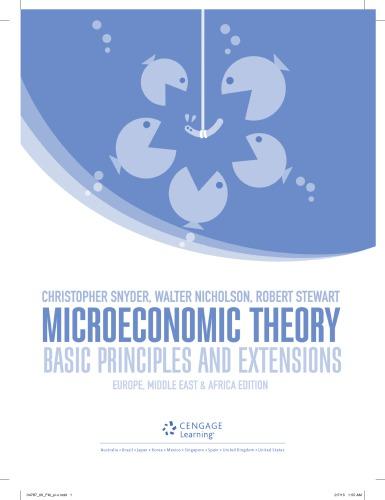15.7 Now add an entry stage after irm 1 chooses q1. In this stage, irm 2 decides...
Question:
15.7 Now add an entry stage after irm 1 chooses q1.
In this stage, irm 2 decides whether to enter. If it enters, then it must sink cost K2, after which it is allowed to choose q2. Compute the threshold value of K2 above which irm 1 prefers to deter irm 2’s entry.
Represent the Cournot, Stackelberg, and entry deterrence outcomes on a best-response function diagram.
Recall the Hotelling model of competition on a linear beach from Example 15.5. Suppose for simplicity that ice cream stands can locate only at the two ends of the line segment (zoning prohibits commercial development in the middle of the beach). This question asks you to analyse an entry- deterring strategy involving product proliferation.
a.
Consider the subgame in which irm A has two ice cream stands, one at each end of the beach, and B locates along with A at the right endpoint. What is the Nash equilibrium of this subgame? Hint:
Bertrand competition ensues at the right endpoint.
b.
c.
If B must sink an entry cost KB, would it choose to enter given that irm A is in both ends of the market and remains there after entry?
Is A’s product proliferation strategy credible?
Or would A exit the right end of the market after B enters? To answer these questions, compare A’s proits for the case in which it has a stand on the left side and both it and B have stands on the right to the case in which A has one stand on the left end and B has one stand on the right end (so B’s entry has driven A out of the right side of the market).
Step by Step Answer:

Microeconomic Theory Basic Principles And Extensions
ISBN: 9781473729483
1st Edition
Authors: Christopher M Snyder, Walter Nicholson, Robert B Stewart






